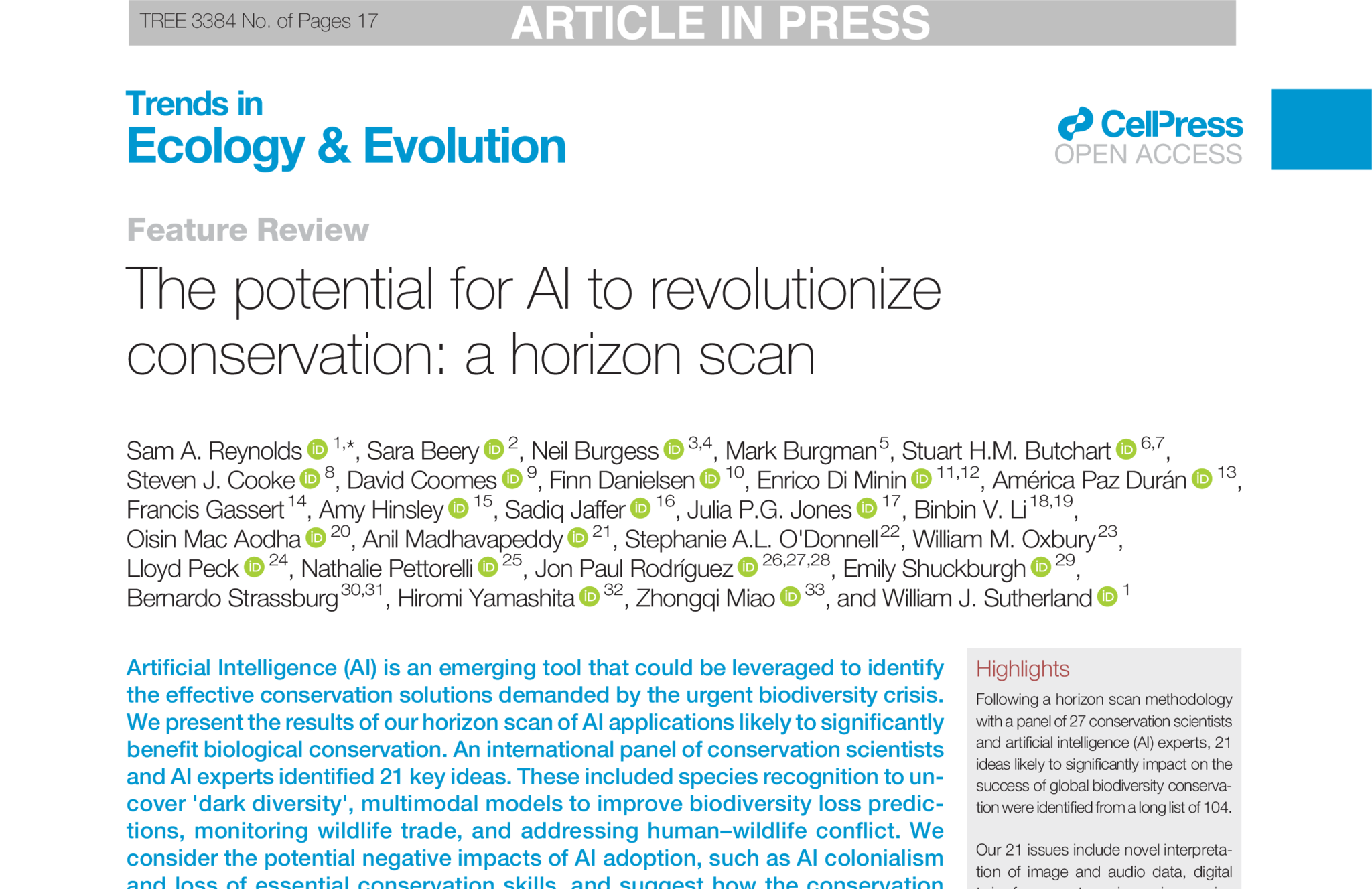The potential for AI to revolutionize conservation: a horizon scan
Sam Reynolds, Sara Beery, Neil Burgess, Mark Burgman, Stuart Butchart, Steven J. Cooke, David Coomes, Finn Danielsen, Enrico Di Minin, América Paz Durán, Francis Gassert, Amy Hinsley, Sadiq Jaffer, Julia P.G. Jones, Binbin V. Li, Oisin Mac Aodha, Anil Madhavapeddy, Stephanie O'Donnell, Bill Oxbury, Lloyd Peck, Nathalie Pettorelli, Jon Paul Rodríguez, Emily Shuckburgh, Bernardo Strassburg, Hiromi Yamashita, Zhongqi Miao, and Bill Sutherland.
Journal paper in Trends in Ecology & Evolution.
Artificial Intelligence is an emerging tool that could be leveraged to identify the effective conservation solutions demanded by the urgent biodiversity crisis.
We present the results of our horizon scan of AI applications likely to significantly benefit biological conservation. An international panel of conservation scientists and AI experts identified 21 key ideas. These included species recognition to uncover 'dark diversity', multimodal models to improve biodiversity loss predictions, monitoring wildlife trade, and addressing human–wildlife conflict. We consider the potential negative impacts of AI adoption, such as AI colonialism and loss of essential conservation skills, and suggest how the conservation field might adapt to harness the benefits of AI while mitigating its risks.
